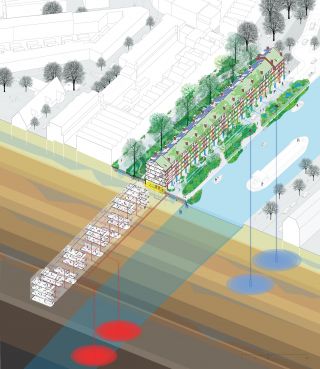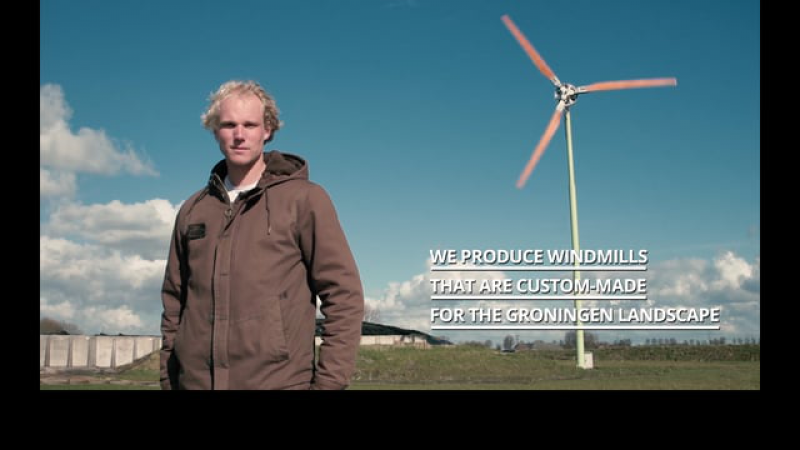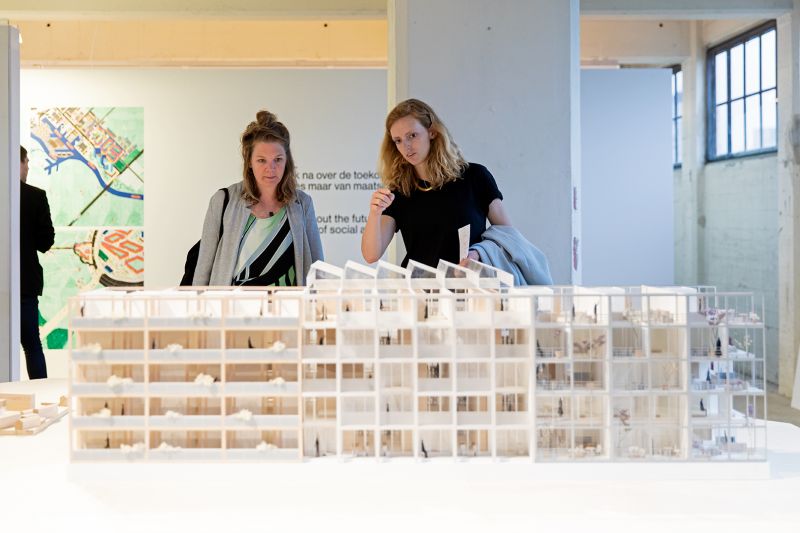
IABR–Atelier Rotterdam: thermal energy from surface water in Bospolder-Tussendijken
© IABR, OOZE
Large-Scale Wind Energy Production on the North Sea
‘If we take the 2 ºC climate target seriously, what should we do?’ Starting from this seemingly simple question, which the Ministry of Economic Affairs put to the IABR in 2016, IABR–Atelier 2050 - An Energetic Odyssey explored the possibilities of large-scale renewable energy production on the North Sea. A knowledge consortium was formed – including Shell, Van Oord, the Port of Rotterdam Authority, Natuur & Milieu, TenneT, various Dutch ministries and of course designers – with the curators of IABR–2014 and IABR–2016, Dirk Sijmons and Maarten Hajer, at the helm.
The Atelier 2050 resulted in a large-scale installation that, including an animation that visualizes the possible future, depicts a transition leap that shows that it is possible to harvest wind energy to supply the surrounding countries on a very large scale from the relatively shallow North Sea. The 25,000 10 MW wind turbines that can cover around 90 percent of the North Sea countries’ electricity consumption by 2050 comprise the plan’s crowning touch.
The Atelier investigated what such an ambitious transition leap would involve, what infrastructure it would require, how it could be carried out without causing damage to North Sea nature, what innovations and policies it would require and what new economic dynamics it would generate, for example in the Port of Rotterdam and in the offshore sector.
Energy Transition in Groningen
In 2016 the IABR–Atelier Groningen presented the results of its research into how the Province of Groningen could use the energy transition, in collaboration with several cities and businesses in Eemshaven, to create new perspectives for the regional economy and for the spatial quality of the city and region. An extensive exploration of ways to switch to renewable energy over the next 15 years and ways to reap the economic benefits of that switch led to four prospects, for one Nordic City.
More about the results of the research led by Jandirk Hoekstra of H+N+S Landscape Architects, can be found in the brochure De Nordic City and in De Nordic City: de Film.

10:23"
Commissioned by iabr/UP for IABR-2016–THE NEXT ECONOMY.
Production: Strawberry Fields
Producers: Marieke Francke and George Brugmans
© iabr/UP, 2016
Those who want to go into more depth can download the studies by Quintel Intelligence, E&E Advies, Atelier Stadsbouwmeester Groningen (with Specht Architecten, Studio MARCHA and MD landschapsarchitecten), Maat ontwerpers en Van Paridon x De Groot (met DAAD Architecten en LINT) here.
Building for the Energy Transition
In 2018, CIVIC carried out research by design into new building typologies for the energy transition for IABR–Atelier Rotterdam. Although there is a lot of expertise about energy-efficient construction, it used to be fragmented. CIVIC has brought all such knowledge together in the Lexicon Architectuur & Energie, an overview of building blocks that together lead to principles for better energy performance, a better indoor climate, and new architecture. This is a first exploration of a new architecture that both embraces the energy transition and delivers spatial and user quality. The energy transition can be used as a lever for better buildings in a better living environment.
The principles are applied to two typologies common in Rotterdam, the postwar housing association block and the new high-rise tower.The Gijslingflats in the Bospolder-Tussendijken district are exemplary of the first typology, the postwar housing association block that accounts for more than a quarter of Rotterdam’s building stock and presents the main renovation challenge.

CIVIC for IABR–Atelier Rotterdam
picture: Aad Hoogendoorn
